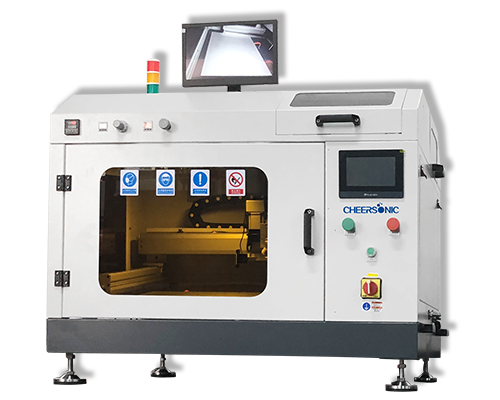PEM Electrolyzer Coating
PEM Electrolyzer Coating – Spray Coating – Cheersonic
Fuel cells work on low temperature compared to other electrolyte cells at about 800c which makes it rapid startup. They are lightweight and compact. As the electrolyte is solid, so sealing of anode and cathode is far easier. Solid electrolyte is less prone to corrosion which enhances its life time. Fuel cells can recharge by recharging the fuel whereas batteries must be plug in which is time consuming.There are some disadvantages of fuel cells, fuel availability and storage is main problem. Fuel is hydrogen which is not widely available and is difficult to store. Solid electrolyte works in the presence of water. In this case, moister of cathodeand anode becomes important consideration. Cost is also a major factor. Due to its prohibitive price it is being used only in economically competitive applications.
PEMFC stands for polymer electrolyte membrane fuel cell. These cells have the ability to operate at very low temperatures; this is one of the reasons for the use of PEM. The cell has a sandwichlike structure which consists of two porous electrodes in Teflon like membrane, which is excellent conductor of protons and an insulator of electrons. The fuel is hydrogen and oxygen. Source of oxygen is natural source, free air and oxygen can be obtain from methanol, ethanol, natural gas, biomass, water treatment plants by electrolysis, thermolysis, photoelectrochemical processes and supplied to anode, where hydrogen ions and free electrons are generated. It is necessary to control the management of water in membrane. Most PEMFC electrolytes are based on thin polymeric membranes that conduct H+ ions. For a polymer to be a good conductor it should have fixedcharge sites and should have free volume. Membrane is often made of NafionTm material which is copolymer of Teflon tetrafluoroethylene.

Cheersonic ultrasonic coating systems suitable for R & D, small and medium-sized batch production. It produce highly durable, uniform, coatings of carbon-based catalyst inks onto both fuel cell and electrolysis processes for proton exchange membrane (PEM) electrolyzers such as Nafion, without deformation of the membrane. Benefits of ultrasonic spray technology over other methods:
1.Excellent stiction “adherence” to PEM; optimal for high vibration fuel cell applications such as automotive parts.
2.Low diversion pressure can reduce waste of overcoating and air pollution
3.Intermittent or continuous operation
4.High transfer efficiency.
5.no blockage
6.Utilization> 95%
7.Corrosion resistant stainless steel and titanium construction

